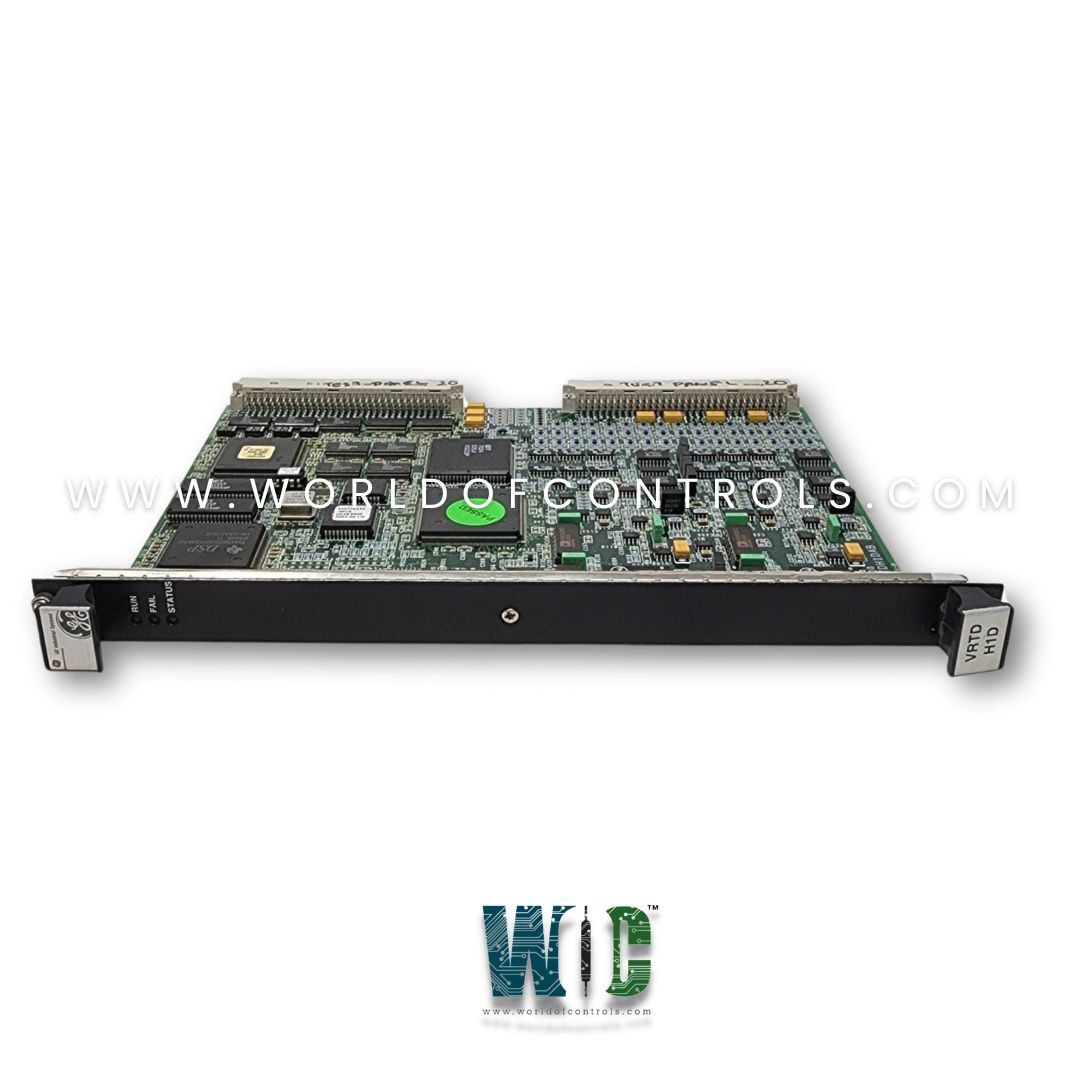
World Of Controls understands the criticality of your requirement and works towards reducing the lead time as much as possible.
IS200VRTDHID - RTD Processor Board is available in stock which ships the same day.
IS200VRTDHID - RTD Processor Board comes in UNUSED as well as REBUILT condition.
To avail our best deals for IS200VRTDHID - RTD Processor Board, contact us and we will get back to you within 24 hours.
Part No.: IS200VRTDHID
Manufacturer: General Electric
Country of Manufacture: United States of America (USA)
Temperature: 0 to 60 °C
Number of channels: 16
Technology: Surface-mount
Product Type: RTD Processor Board
Availability: In Stock
Series: Mark VI
IS200VRTDHID is an RTD Processor Board developed by GE. It is a part of the Mark VI control system. This board is specifically designed to measure temperature accurately using RTD sensors in industrial applications. It accepts up to 16 three-wire RTD inputs, making it suitable for large-scale temperature monitoring. These RTDs are connected through an RTD terminal board, such as TRTD or DRTD, via specialized cables with molded connectors, ensuring reliable connections.
Once digitized, temperature values are transmitted via the VME backplane to the VCMI (VME Communication and Monitoring Interface) board. The VCMI then communicates this data to the Mark VI controller, which uses it to regulate and monitor temperature-dependent processes. This seamless integration ensures that real-time temperature data is available for system decision-making, contributing to overall system performance and safety.
The digital signal processor (DSP) on the VRTD board performs software-based linearization, allowing for accurate interpretation of the RTD signals across a wide range of temperatures. The board supports 15 different types of RTDs, offering compatibility with various sensor materials and standards. This flexibility allows the system to be tailored for specific industrial requirements.
The board includes advanced diagnostics to detect open and short circuits on any RTD input. If a sensor reading falls outside the hardware-defined limits, that channel is automatically removed from the scan cycle to avoid affecting other measurements. Faulted channels are automatically reinstated after 20 seconds if the problem clears. Alternatively, users can manually restore the channel when maintenance is complete.
The WOC team is always available to help you with your Mark VI requirements. For more information, please contact WOC.
What is IS200VRTDHID?
It is an RTD Processor Board developed by GE under the Mark VI series.
How does the VRTD board supply excitation current to RTDs?
The board provides a 10 mA DC multiplexed excitation current to each RTD through the terminal board.
What type of A/D converter does the board use?
The board utilizes a Voltage Controlled Oscillator (VCO) type Analog-to-Digital (A/D) converter.
How often are RTD signals sampled by the RTD board?
In normal mode scanning, signals are sampled four times per second, while in fast mode scanning, the sampling frequency is increased to 25 times per second.
What types of RTD linearization does the VRTD board support?
The board supports linearization for 15 different RTD types, ensuring accurate temperature measurement across various applications.
How does the VRTD board detect faults in inputs?
Faults such as open and short circuits in inputs are detected by monitoring for out-of-range values.
What happens if an RTD is determined to be outside hardware limits?
If found to be outside hardware limits, it is automatically removed from the scanned inputs to prevent adverse effects on other channels.